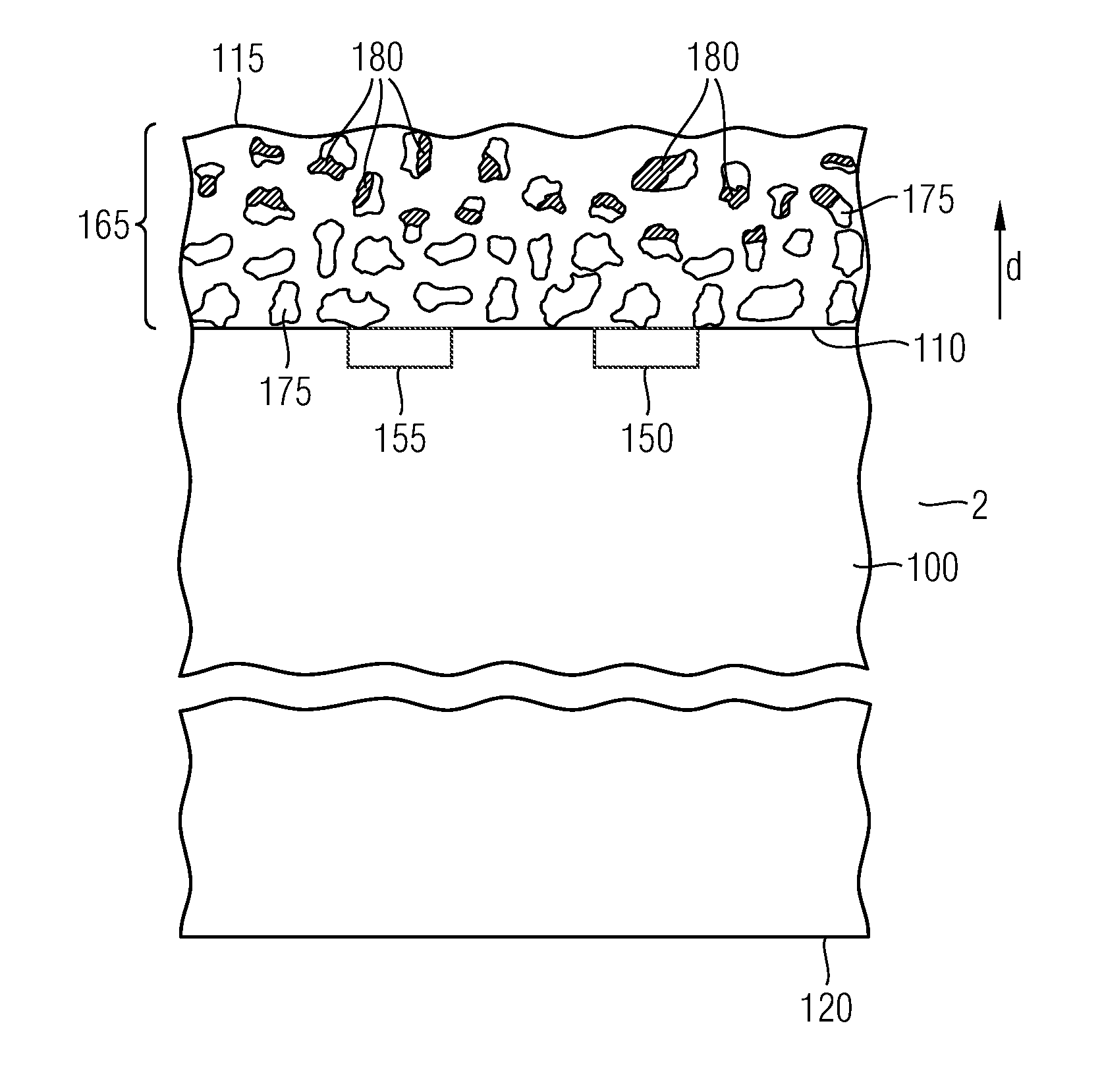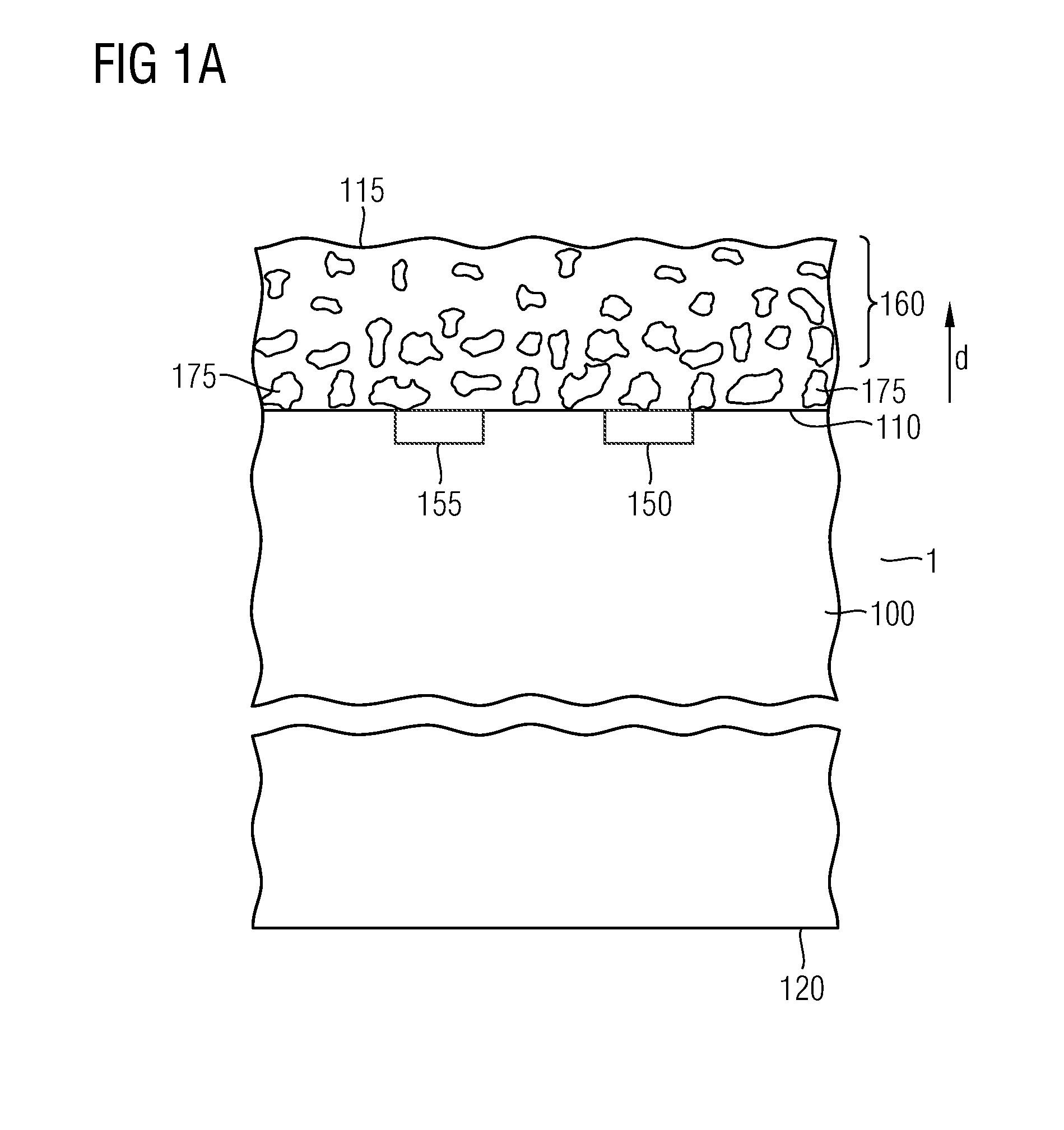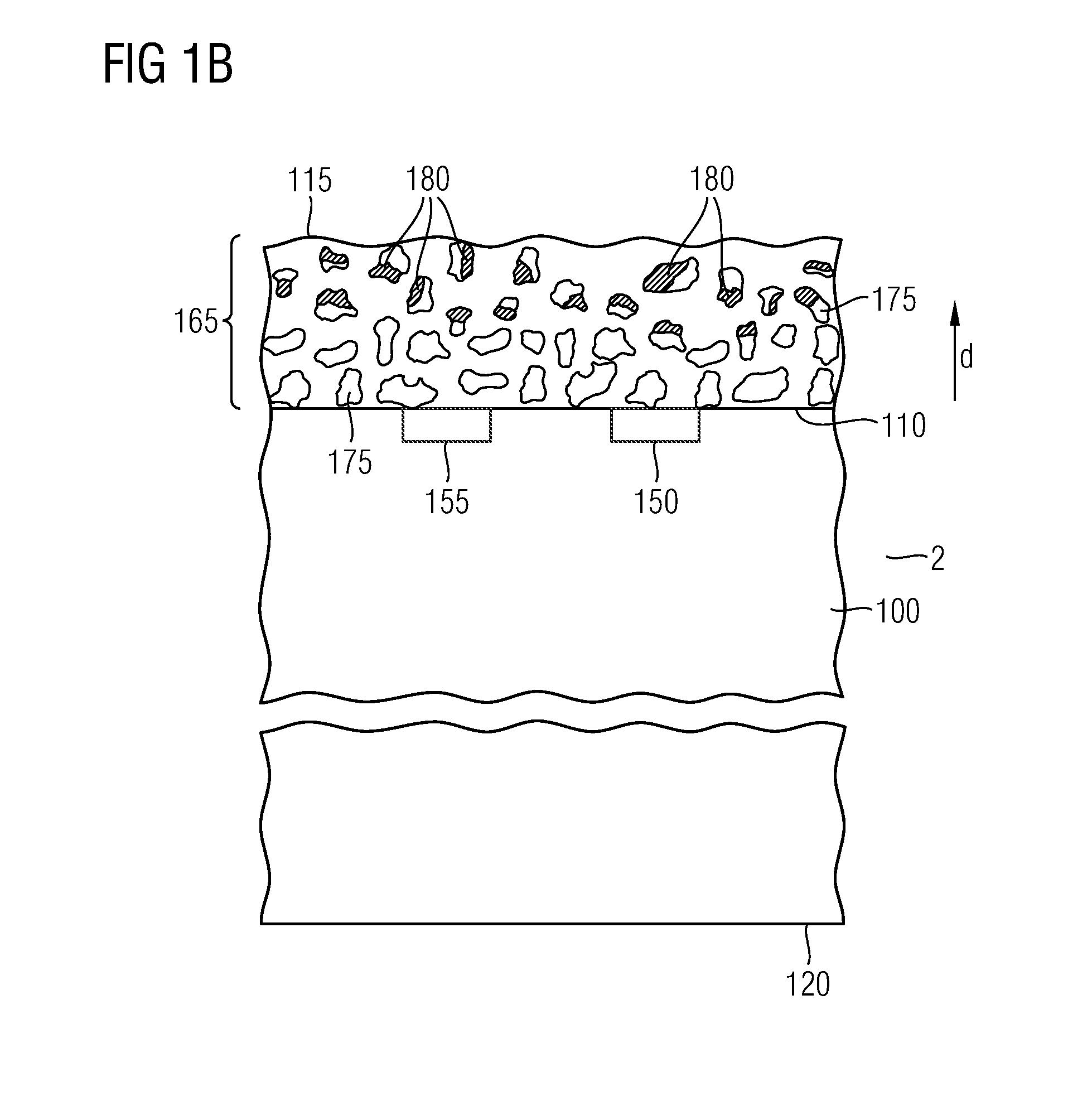Device including a metallization layer and method of manufacturing a device
- Summary
- Abstract
- Description
- Claims
- Application Information
AI Technical Summary
Benefits of technology
Problems solved by technology
Method used
Image
Examples
example 1
[0042]Starting material is a porous copper layer on an arbitrary carrier, e.g. a semiconductor wafer printed with a copper paste. The copper paste has been dried, sintered and annealed. This system defines a mechanical stable porous system. Thereafter, a copper nanoparticle ink may be applied, such as CI-002 (made by Intrinsiq Materials Inc.) using an inkjet printing process. For example, one layer of nanoparticles may be applied at a printing resolution of 495 dpi (“dots per inch”). The substrate temperature may be 35° C. and the following parameters may be set. Print head: 2 / 6 / 2 waveform (piezo); 87.2 V; 90%; −20 mbar; 30° C. head temperature; 35° C. substrate temperature. Thereafter, the metallization layer is dried at 100° C. for 15 minutes. Then, a sintering process is performed at 400° C., using 30 min. pre-heating time and 15 min. heating time at 400° C. at a N2 / CH2O2-atmosphere.
[0043]It has been shown that the applied nanoparticles are fused together or coalesced with the co...
example 2
[0056]Starting material is an arbitrary carrier. For example, the carrier may be a semiconductor wafer comprising several device components 555, and, optionally, circuit elements 550 (cf. FIG. 5) as has been discussed above with reference to FIG. 1. For example, a barrier layer may be formed over the first surface 510 of the carrier 500. For example, if the semiconductor material is silicon, an unwanted chemical reaction between the silicon and the copper layer may be avoided due to the barrier layer. Thereafter, a first copper paste is applied to the carrier 500. For example, this may be accomplished by performing a stencil or a screen printing method, followed by a drying step (e.g. at 60° C. for 1 hour, depending on the paste properties) and further steps of sintering and annealing. As a result, a mechanical stabile porous system having a porosity of approximately 40 to 50% and a layer thickness of 10 to 50 μm may be obtained, depending on paste and stencil thickness. As is to be...
example 3
[0070]Starting point for performing the method according to this embodiment is a base element similar to the base element described with reference to Example 2. First, a metal paste (e.g. CP-003 by Intrinsiq Materials Inc.) for forming a metal layer having a high degree of porosity is applied. This may be accomplished using a paste printing method (stencil or screen print). Then, a drying process and an annealing step may be performed so as to form a mechanical stabile porous system having a porosity of approximately 40-50%. The process parameters may be as described with reference to Example 1. The metal layer may have a thickness of approximately 10 to 50 μm. Thereafter, a metal organic copper precursor compound may be applied.
[0071]According to an example, a copper oximate may be used. A heat treatment to a temperature sufficient to decompose the copper oximate may be performed. For example, the base element may be heated to a temperature of approximately 180° C. As a result, CuO...
PUM
 Login to View More
Login to View More Abstract
Description
Claims
Application Information
 Login to View More
Login to View More - R&D
- Intellectual Property
- Life Sciences
- Materials
- Tech Scout
- Unparalleled Data Quality
- Higher Quality Content
- 60% Fewer Hallucinations
Browse by: Latest US Patents, China's latest patents, Technical Efficacy Thesaurus, Application Domain, Technology Topic, Popular Technical Reports.
© 2025 PatSnap. All rights reserved.Legal|Privacy policy|Modern Slavery Act Transparency Statement|Sitemap|About US| Contact US: help@patsnap.com



